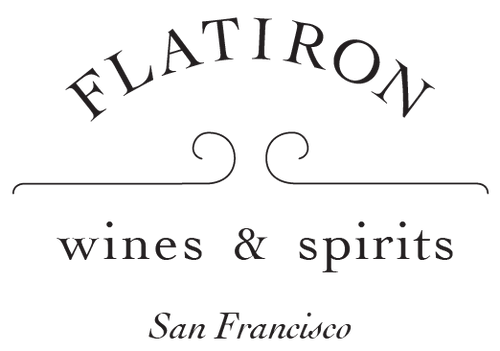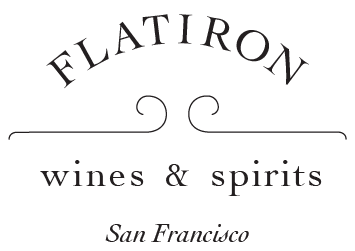
A Tale of Two Colors:
White from Black and White from White
Dear Extra Brut Friends,
Sometimes the best way to understand something is through contrasts. This month, we're exploring one of Champagne's most fascinating contrasts: Blanc de Noirs (from Pinot Noir) and Blanc de Blancs (from Chardonnay) as a way both to taste some delicious wines and to deepen our understanding of what Pinot Noir and Chardonnay each bring to the table in Champagne.
We’ve picked two utterly delicious wines that showcase this contrast brilliantly: Geoffroy's 2017 "Empreinte" Blanc de Noirs, and Pierre Gimonnet's 2016 Special Club. Of course, these wines aren't just academic exercises in varietal expression; the producer’s decision to make single-varietal Champagnes is part of the local traditions, which have developed over generations of observation of what the specific terroir demands and has to offer. These are the perfect grapes -- and wines -- to express their terroirs.
Cheers,
Your Friends at Flatiron Wines
P.S. Have a question or comment you'd like to share?
Our thoughts on this selection
Geoffroy’s “Empreinte” (literally "fingerprint" or "imprint") is a white Champagne made from 100% Pinot Noir. Wait: White wine from red grapes? How does that work?
The secret lies in the grape itself: while we call them "red" grapes (or, in France, “black” grapes) Pinot Noir's flesh is actually clear. Only the skins have color. So if you press the grapes very gently and separate the juice from the skins right away, before the color has a chance to bleed from the skins into the juice, you get a white wine that still captures all of Pinot's distinctive richness and depth.
It's a technique that requires incredible precision. Press too hard and you extract too much, making an overly assertive, out of balance champagne; press too gently and you miss the deep character that makes Blanc de Noirs so special. Geoffroy has the perfect touch.
Of course, great Blanc de Noir also requires the right terroir and a good vintage: Pinot Noir really needs to have something to say to make a great stand-alone Champagne. The 2017 Empreinte expresses that ideal marriage of grape and terroir. Geoffroy’s village of Cumières is Pinot Noir territory with south-facing slopes that catch plenty of sun (helping achieve the ripeness that Pinot Noir needs to show its best) and clay and limestone soils gives the wines a distinctive power and definition that has made them prized components in many of Champagne's greatest bottles. 2017, with its warm summer and ideal harvest conditions, was the perfect vintage for this sort of wine. The result is a wine with some of the weight, complexity and aromatics of still wine (what wine geeks often call “vinosity”) but that is Champagne, through and through – fresh and mineral and invigoratingly bubbly. There's an almost architectural quality to it: a foundation of mineral strength from the limestone, walls of rich fruit lifted by perfectly integrated bubbles, and a roof of subtle spice notes that develop as the wine opens in the glass.
This is Champagne that can handle serious food. With a mushroom risotto you’ll see both the penetrating side and earthy power. But you don’t need to wait till you make risotto to break it out: it will elevate a rotisserie chicken and, honestly, a glass or two with a burger can be magic. The wine's natural richness embraces the food while its bright acidity keeps everything fresh and lively.
Our thoughts on this selection
While Geoffroy conjures white wine from black grapes, Blanc de Blancs is a more straightforward-sounding white wine from white grapes. But there's nothing simple about crafting a great Blanc de Blancs. It requires exceptional terroir and generations of knowledge to reveal Chardonnay's full potential. If Geoffroy's wine shows what Pinot Noir can do, Gimonnet's Blanc de Blanc is a masterclass in Chardonnay. The Gimonnet family has been farming in the Côte des Blancs since 1750, and they've learned a thing or two about getting the most from this legendary terroir. While Cumières' clay-limestone soils give Geoffroy's wines their power and richness, the pure chalk of the Côte des Blancs brings a crystalline precision to Gimonnet's Chardonnay.
But there’s something else on the Gimonnet label that isn’t on the Geoffroy: the "Special Club" designation. What does that mean? Well, in brief, it means that a bunch of the best small Champagne growers agree that this is a, well, very special bottle. The Club Trésors de Champagne is an (invite-only) group of grower-producers who submit their best wines for blind tasting by their peers. If this group of insiders agrees it’s worthy, a wine gets the designation and even gets to be bottled in a distinct “Special Club” bottle. It's a mark of excellence that's all the more meaningful because it comes from fellow growers.
Gimonnet's Special Club is a selection of their best plots across several grand cru villages. The 2016 vintage was challenging (spring frost and mildew pressure meant careful vineyard work and rigorous sorting was essential) but rewarding for those who worked carefully, producing wines of particular precision and minerality. In Gimonnet's hands, these characteristics amplify the natural tendencies of Côte des Blancs Chardonnay towards ethereal elegance and chalky tension.
This Champagne is both penetrating and playful. The mousse is impossibly fine, carrying delicate citrus and white flower notes that gradually reveal deeper tones of patisserie and wet stones. It's a wine that makes you want to break out the caviar or fresh oysters – or even potato chips (funny but true).
The contrast between these two wines shows exactly why Champagne is endlessly fascinating. One wine demonstrates power without weight, the other precision without austerity. Both are undeniably fine Champagne, yet they couldn't be more different in their approaches.
Try them side by side if you can – it's a masterclass in how grape variety, terroir, and winemaking philosophy come together in the glass. Want to fully geek out? Serve them just slightly cooler than cellar temperature (say, 50-55°F) and let them warm gradually in the glass. And if you're planning a dinner party, open both: start with the Gimonnet as an aperitif and with light first courses, then move to the Geoffroy as the dishes become richer.
We're here to help
Have a burning question or just want to connect with our team of fellow Champagne lovers?
YOU MAY ALSO LIKE
A guide to the best bubbles in the world and what makes them different from the Grandes Marques
Champagne is the world’s most famous sparkling wine. Hailing from the Champagne regions of France, its biggest names are among the biggest names in wine: Moet, Dom Perignon, Veuve Clicquot, Cristal.
But there’s another side to Champagne: a universe of small-scale producers preserving ancient family farming traditions and bottling wines you’ve never heard of.
These are the Grower Champagnes.

















